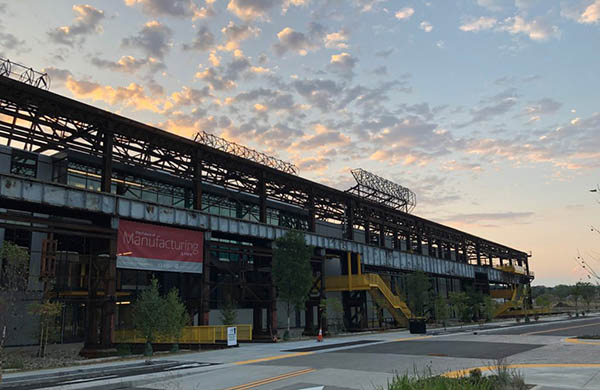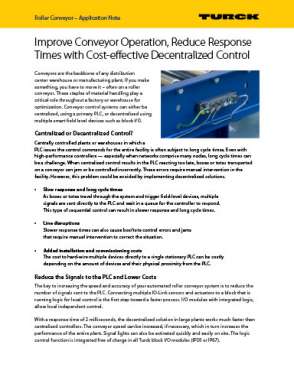ARM Institute Selects Eight New Robotics Projects for Funding
The technology projects chosen by the ARM Institute focus on Defense Department modernization priorities to meet U.S. manufacturing needs.
The Advanced Robotics for Manufacturing, or ARM, Institute today announced the selection of eight new robotics technology projects for funding. The consortium said it chose projects that respond to urgent needs in U.S. manufacturing and that address modernization priorities of the U.S. Department of Defense.
“The ARM Institute is pleased to announce these eight new development projects,” stated Dr. Charles Brandt, vice president of technical initiatives at the ARM Institute. “These projects represent the expertise and commitment of 27 unique member organizations to tackle key manufacturing modernization challenges for the defense and commercial sectors requiring robotic technologies.”
With members across industry, academia, and government, the ARM Insitute is a Manufacturing Innovation Institute (MII) funded by the Defense Department and is part of the Manufacturing USA network. The organization's goal is to help U.S. manufacturing be competitive and resilient through robotics and workforce development. President Joe Biden visited the institute in Pittsburgh today (remarks at 15:30 below).
The ARM Institute, which has more than 330 members, has invested in over 90 technology and workforce projects to date. The institute said it plans to award nearly $4 million in funding for a total constribution of about $8 million across the following eight projects.
AI Robot Programming Assistance
Lead: University of Memphis
Partners: READY Robotics, FedEx, DeepHow
Description: There are technologies that can now dramatically reduce the knowledge necessary to program and install a robot, using no-code methods that make robotic programming accessible to those on the factory floor. However, there is still the limitation of process automation knowledge that can bottleneck or be a detriment to a successful robotic installation.
This project aims to create an assistance system that can act as a stopgap for this lack of expertise by providing suggestions and corrections during robot task programming. This system will use artificial intelligence and machine learning methods to learn a model of the industrial task from previously programmed tasks and use this corpus to aid the user. This will allow a novice programmer to approach expert-level programming.
Visual Tactile Robotic Surface Inspections
Lead: Siemens
Partners: GelSight Inc., Carnegie Mellon University, ATI Specialty Alloys and Components, Boeing
Description: This project will develop a robotic vision and visual tactile inspection system that automates high-resolution surface defect inspections of spacecraft components and commercial airplane fuselages. These technological improvements could improve the quality of aerospace inspections as well as replace manual operations, said the ARM Institute.
The inspection system could also improve the reliability, maintainability, and readiness of aviation assets and ultimately to reduce the lifecycle costs of the fleet. AI and robotics would allow the system to standardize and learn inspection processes for many components in different industries, which would also benefit a broad subset of ARM Institute members.
Optimized Robot Motion Program for Tracking Complex Geometric Paths
Lead: Rensselaer Polytechnic Institute
Partners: GE Research, Southwest Research Institute, Wason Technology
Description: This project aims to autonomously create a high-speed and high-precision curvilinear robot tool trajectory on a complex curved geometry using industrial robots with redundant degrees of freedom, to reduce or eliminate the need for manual tuning often required today.
The project will develop an optimization approach to decompose a given path to a sequence of robot motion primitives to achieve minimum cycle time with guaranteed tracking accuracy. Simulation-based data will be used to train machine learning tools to reduce the optimization computation time.
Autonomous Robotic Metal Forming
Lead: The Ohio State University
Partners: Yaskawa, CapSen Robotics
Description: The project team will address the challenge of low-volume, high-mix production of complex metallic components. Metallic components are commonplace in the commercial automotive sector; high-end auto sports; heavy-duty factory machinery; power plants; and in air, land, and sea-based military equipment.
When replacement components are needed, particularly for aging systems, quality, cost, and lead-time are often unable to be balanced for an acceptable solution. The team will design and deploy an AI robotic system capable of flexibly producing a myriad of component geometries in a timely and cost-effective manner.
Uniform Work Robotic Sanding with Intra-stage Inspection
Lead: GKN Aerospace
Partners: National Institute of Aerospace Research, GrayMatter Robotics, University of Washington, EWI
Description: Past ARM Institute projects on automated surface-finishing worked on path-planning, uniform finishing, and automated inspection. The project team will combine the outputs from these past projects to create an effective sanding and polishing technology that benefits multiple industries.
High-Precision Adaptive Machining for High-Temperature Materials
Lead: GE Research
Partners: GrayMatter Robotics, FANUC
Description: The project team will focus on enabling high-precision adaptive machining of complex cooling circuits in high temperature materials through the development of an open architecture framework that integrates sensor data and automatically adjusts tool paths and process parameters to achieve an optimal solution for laser drilling.
Sensing will be used both to inspect for variability in the incoming part and in-process to monitor progress of the machining operation. This project will reduce scrap rate through improved process control and repeatability, as well as create a framework that allows for easy interchange of alternative tools or sensors to fit the end user’s target application.
Ceramic Matrix Composites Pick, Place, and Form Automation
Lead: Boeing
Partners: University of Southern California, 3M Co.
Description: To ensure the affordability of defense and commercial high-temperature structures, cost-effective means of fabricating high-quality, temperature-resistant material components at faster manufacturing rates is essential.
The project team plans to develop automated trajectory planning for forming fabric-based prepregs to contours, automated in-process inspection for un-compacted areas and automated generation of rework tool paths, and self-corrective robotic recovery for prepreg backing film-removal failures.
Safe Robotic Handling of Energetic Materials
Lead: Rensselaer Polytechnic Institute
Partners: Schlumberger, Interface Technologies, FANUC
Description: The project team aims to develop fundamental technologies for robotic handling of energetic materials. Manufacturing with energetic materials imposes numerous constraints on the manufacturing process. Among these are limitations on the mass of energetic material that can be present at any given time within a given space.
In this project, the partners said they will seek to reduce this exposure by applying robotics to an energetics refilling operation. Execution of this project will demonstrate safety systems, robotic manipulation strategies and designs that are immediately applicable to manufacturing of shaped charges, as well as more broadly to the production of other devices and products that use energetics and advance the state of the art in this field.













